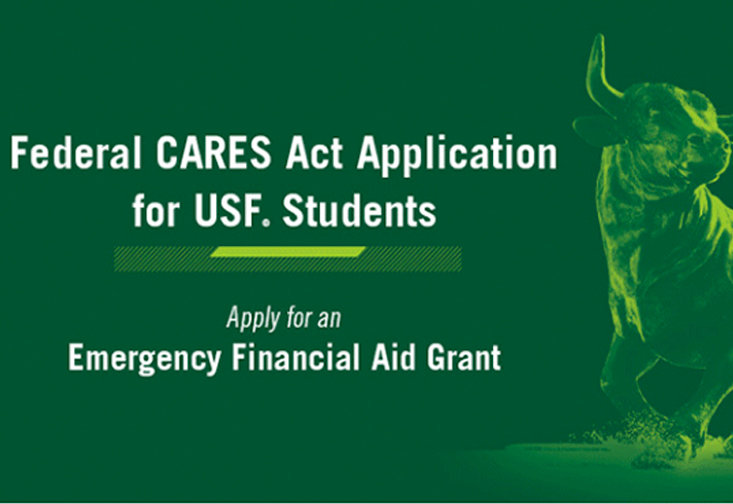The coronavirus pandemic and its impact on many sectors of the economy is directly affecting college students, from lost jobs to reduced family support due to changing financial situations. Such rapid changes will challenge how college students continue to succeed while earning their degrees on time.
There is however a plethora of financial aid resources and new opportunities students can and should take advantage of in order to support their higher education in this new landscape.
First and foremost is the CARES Act (Coronavirus Aid, Relief and Economic Security) Higher Education Emergency Relief Fund. The University of South Florida received $17.4 million from the U.S. Department of Education, which is being used for emergency student aid. Students who have expenses related to the disruption of campus operations – from medical and housing to unexpected childcare and relocation costs – are eligible to apply for this program.
“We began administering these funds to students who were enrolled in the spring semester and are continuing to do so throughout summer,” said Billie Jo Hamilton, USF’s associate vice president of enrollment planning and management. “We also made the decision to administer CARES Act funding in such a way so that students can have access to it throughout the fall, as impacts from the pandemic will continue as we start the upcoming semester.”
As of July 7, 2020, the university has provided more than $10.5 million in financial assistance to around 10,350 USF students. Eligible students may apply online through August 7 or until all funds are exhausted.
In June, the university made an unprecedented investment of $20 million to help students who continue to experience financial hardships get back on a path to a timely graduation. The university has begun awarding the We Got U-SF Scholarship and waiver to nearly 22,000 eligible undergraduate and graduate students to encourage full-time enrollment in the fall semester.
“This investment, which is intended to cover most of the cost of an additional course, gives almost every student money if they go full time and if they aren’t already receiving some other type of financial aid or tuition waiver,” said Hamilton. “We don’t want students to take a pause or slow down their higher education goals.”
USF created this unique initiative upon recognizing that financial uncertainty may interrupt the academic progress of students, which could lead to increased debt and tens of thousands of dollars in lost wages from delayed entry into the workforce.
Beyond the financial assistance provided due to the pandemic, Hamilton stressed the same message she does every year to students: the need to apply for FAFSA (Free Application for Federal Student Aid) and understand the requirements. She also urges students to get in touch with the financial aid office to discuss unique circumstances and not wait until the last minute.
“Students should know that it is really challenging planning for financial aid and their college costs, navigating how much they need and whether they should take out a loan or not,” explained Hamilton.
This year could prove even more challenging. Hamilton said that families have been getting in touch to discuss their changing financial situations and how that will impact FAFSA.
“We are starting to hear from families that the aid they have been awarded based on their 2018 income doesn’t reflect how their income has changed drastically due to the pandemic. Students and families may need to reach out to our office to see about re-evaluating their eligibility for aid in 2020,” said Hamilton.
There is some good news. The recent consolidation of the three USF campuses, which went into effect on July 1, could bring about greater financial opportunity. Most academic scholarships are attached to colleges and academic programs. With more programs planned to be offered at all three campuses, there is a strong likelihood students will be eligible for more scholarships than they would prior to consolidation.
So, what can undergraduate and graduate students do right now to take advantage of this new landscape? For starters, make sure to read emails from the financial aid office and act when directed. Commit academically to fall classes and apply for available funds if eligible. And always get your information directly from reliable sources, added Hamilton.
“Don’t assume that your friend or someone else can directly speak to your financial situation, as each student is different,” she said. “Rather, talk to someone in the financial aid office, they would best be able to help you with your unique situation.”
